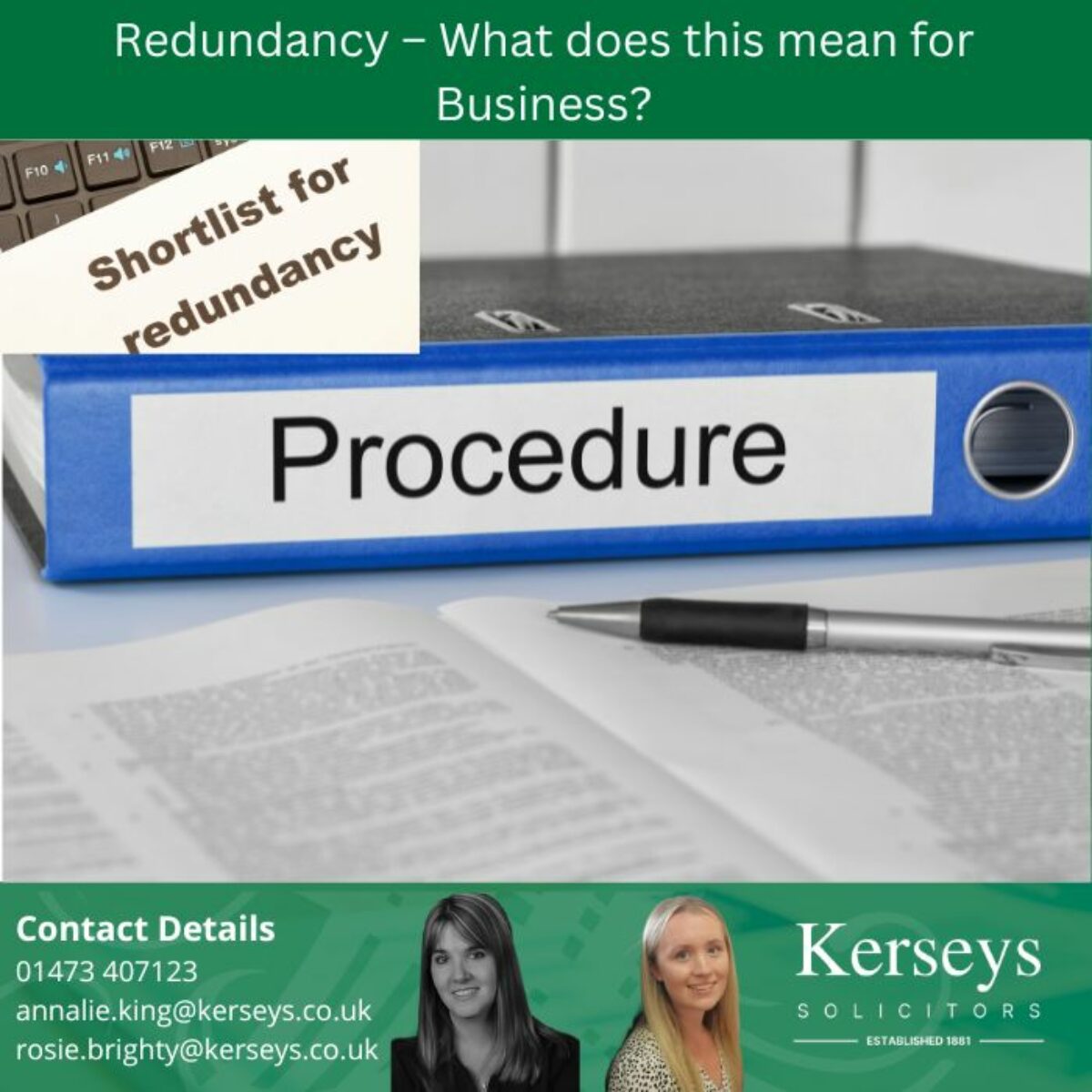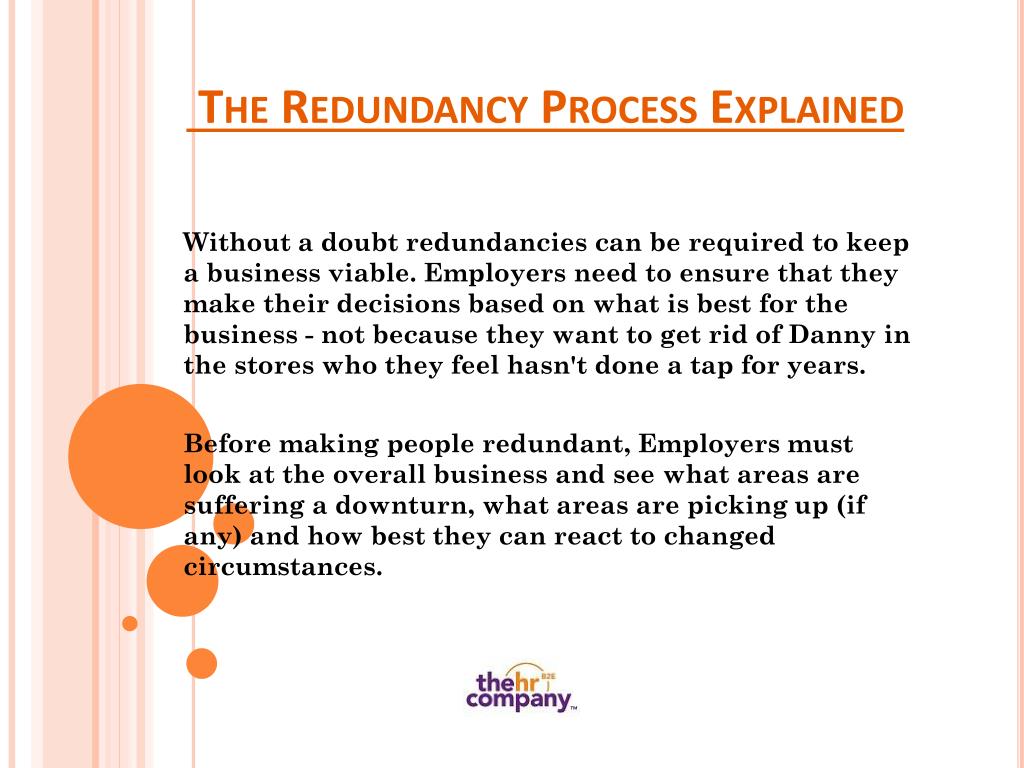Small Business Closing Employee Rights UK: Making Certain Fair Redundancy Pay
Wiki Article
Exploring the Interplay In Between Business Redundancy and Organizational Flexibility for Future Growth
In the vibrant landscape of today's organization globe, the intricate connection in between firm redundancy and business adaptability arises as an essential aspect for continual development and success. Firms often encounter the challenge of striking a delicate equilibrium between preserving a degree of redundancy to mitigate threats and cultivating flexibility to react promptly to the ever-evolving market needs.Value of Company Redundancy
Business redundancy is a critical element that improves organizational durability and reduces operational risks. By incorporating redundancy measures within the business structure, firms can much better stand up to unexpected interruptions and fluctuations in business environment. Redundancy acts as a strategic barrier, permitting firms to adapt and respond effectively to unanticipated difficulties without compromising vital procedures.One key facet of the importance of business redundancy is its role in making sure continuity during times of dilemma. When faced with sudden changes or emergency situations, repetitive systems, resources, or employees can tip in to keep critical features and prevent widespread interruptions. This connection not only safeguards the business's credibility and client depend on but also minimizes economic losses and functional downtime.

Approaches for Organizational Versatility

One more important technique is buying modern technology and framework that can sustain flexibility and scalability. Implementing digital devices, automation, and information analytics can enhance operations, improve performance, and supply important understandings for informed decision-making. Moreover, creating adaptable business frameworks that permit fast modifications to market dynamics and consumer requirements is essential for remaining competitive in a rapidly developing environment. By proactively identifying potential disturbances and possibilities, companies can proactively flourish and adjust in an ever-changing organization landscape.
Balancing Redundancy and Versatility
Attaining an unified equilibrium between functional redundancy and business adaptability is vital in browsing the complexities of a vibrant company environment. Striking the appropriate balance in between redundancy and versatility is a fragile process that needs a deep understanding of the company's objectives, sector dynamics, and risk resistance.To attain this balance, business require to perform routine evaluations of their procedures to determine areas where redundancy is required for danger mitigation and where flexibility can drive technology and development. Executing flexible frameworks, promoting a society of continuous knowing and improvement, and encouraging open interaction throughout all levels of the organization are crucial techniques to harmonize redundancy and flexibility efficiently. By aligning these 2 vital elements, firms can place themselves for lasting development and success in an ever-changing company landscape.
Case Researches on Adjustment Success
In taking a look at instances of effective business adaptation, it comes to be obvious that the interplay in between functional redundancy and flexibility is a defining factor in forming durable businesses. One engaging case research is that small business closing employee rights uk of Netflix. Initially a DVD rental solution, Netflix demonstrated amazing adaptability by transitioning right into a streaming platform when digitalization disrupted the sector. By tactically purchasing innovation and content production, Netflix not only thrived yet endured in a swiftly progressing market. One more standout instance is Amazon. Starting as an on-line bookstore, Amazon constantly adapted its company version, expanding into diverse fields such as cloud computer and synthetic knowledge. This versatility enabled Amazon to stay in advance of rivals and meet changing consumer needs. Lastly, Adobe offers a significant image of successful adjustment. The company moved from selling software application licenses to a subscription-based version, ensuring repeating profits streams and boosted customer interaction. These situation researches emphasize the value of functional redundancy paired with business adaptability in fostering long-term growth and competitiveness.Building Durability for Future Development
Building durability for future development needs a calculated positioning of operational processes with market characteristics and arising patterns. Companies must adjust to changing atmospheres by promoting a culture of adaptability, advancement, and continual improvement. Durability includes not only jumping back from obstacles but likewise proactively preparing for future obstacles. One essential aspect of structure resilience is purchasing robust threat monitoring approaches to minimize prospective disruptions. This consists of situation preparation, branching out supply chains, and developing backup plans for numerous contingencies (who pays redundancy money).Additionally, promoting strong partnerships with stakeholders, such as customers, workers, suppliers, and the neighborhood, is essential for maintaining and weathering unpredictabilities trust and assistance throughout turbulent times. Efficient interaction and openness play a vital function in building resilience, as they aid facilitate and line up assumptions cooperation in navigating uncertainties.
Additionally, companies require to focus on understanding and development initiatives to upskill employees and equip them with the essential tools to adapt to changing situations. By investing in their workforce, companies can enhance their versatility and agility, eventually enhancing their durability for sustainable future growth.
Final Thought

In the vibrant landscape of today's company globe, the detailed connection in between firm redundancy and organizational versatility arises as a crucial aspect for continual development and success. Companies typically encounter the challenge of striking a delicate balance in between maintaining a degree of redundancy to alleviate dangers and fostering flexibility to react swiftly to the ever-evolving market needs.To attain this balance, business require to perform routine assessments of their procedures to determine areas where redundancy is essential for danger mitigation and where flexibility can drive advancement and growth.In verdict, the interaction between firm redundancy and organizational flexibility is vital for future growth. Structure durability through a mix of redundancy and flexibility will certainly make certain that firms are prepared for the obstacles of the future.
Report this wiki page